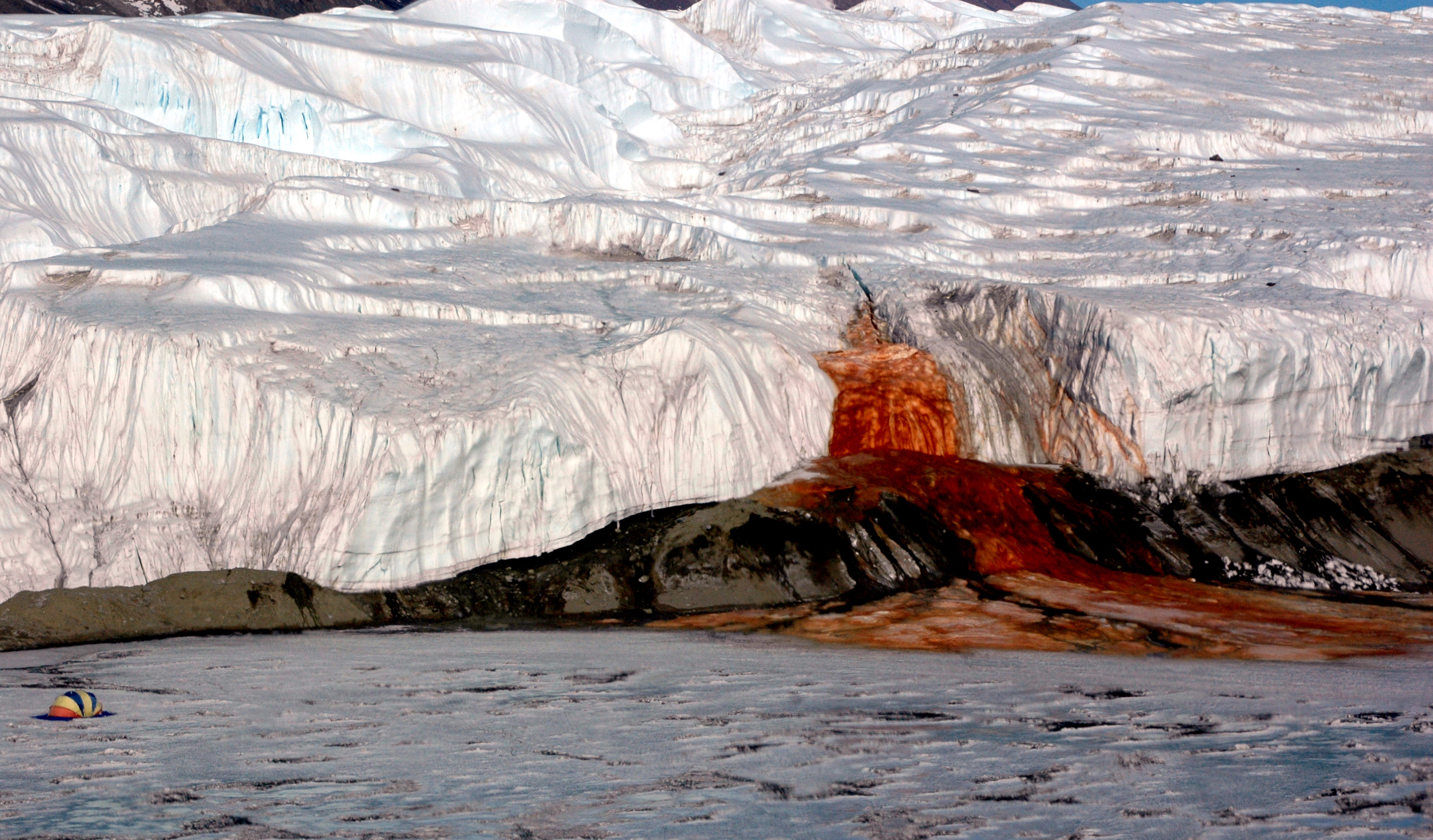Freezing, arid terrain with sweeping winds: that is Antarctica, the southernmost continent on Earth. Since the sighting of the ice mass in the first half of the nineteenth century by marine explorers, Antarctica has attracted umpteen expeditions. During the second half of twentieth century extensive aerial surveys of the continent were conducted mostly by the United States. Airplanes carrying scientists and radar equipments criss-crossed over the icy continent. From the radar data thickness of the ice cover and presence of liquid water below the sheet could be estimated. While those old maps provide information on what the terrain was like "Then", modern satellite imaging techniques yield detailed "Now" images.
 |
| Antarctica with ice shelves marked-Courtesy Wikipedia |
United States' National Science Foundation funds several projects on various aspects of Antarctica. Project Midas undertaken by UK focuses on stability of Larson C ice shelf in West Antarctican coast. In addition to these two countries several others have permanent research stations there.
Not only penguins, blue whales and krill, Antarctica accommodates life in many other forms. The terrain as such is hostile; with global warming and consequential increase in the acidity of the ocean would it become even more inhospitable? Tiny marine snails, Limacina Helicina (also called sea butterflies because evolution equipped them with wings rather than feet) have already devised a counter measure. Acidic ocean can leach out the protective coating on their outer shell. They have learnt to repair this damage not by regenerating the coating but by thickening the innerside of the shell by appropriate secretions. In the picture alongside, the white rectangle marks the area where the effect of ocean acidification was studied. The antarctic fish Emerald rockcod too has braced itself against warming and acidity of the ocean, although it can take on only one at a time.
 |
| Limacina Helicina Courtesy: Wikipedia |
Prof. Belinda Ferrari from the Australian Centre for Astrobiology recently recorded the ability of certain microbial communities to "live on air alone". These microbes belonging to phyla Actinobacteria, can survive by oxidising trace amounts of atmospheric hydrogen and carbon monoxide, present in the atmosphere. Detailed genetic and biochemical studies showed that the microbes possess three very important enzymes: high-affinity hydrogenases, to catalyse the reversible oxidation of hydrogen, carbon monoxide dehydrogenases to facilitate the conversion of carbon monoxide to carbon dioxide and CO2 fixation enzymes of the RuBisCO family to "fix" inorganic carbon into organic carbon.
Tailpiece:
Antarctic tourist season is from November to March, the summertime in southern hemisphere. 2016-17 clocked more than 44,000 visitors!
 |
| Blood Falls: Iron oxide stains the water flow blood red in Taylor glacier Courtesy:Wikipedia |
References:
1. Flying lab to investigate Southern Ocean's appetite for carbon
2. Coping with climate stress in Antractica
3. Sea butterflies patch up shell damage from ocean acidification
4. Pteropods counter mechanical damage and dissolution through extensive shell repair
5. Scientists find antarctic microbes that live on air alone
No comments:
Post a Comment